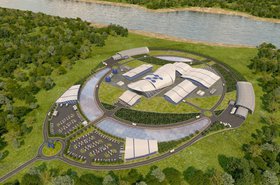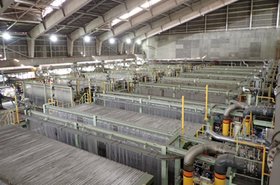The well-publicized problems at NuScale seem to cast a blight on the prospects for small modular reactors (SMRs) the medium-sized, prefabricated power plants that were supposed to save the nuclear industry.
Previously, nuclear reactors have always been giant behemoths, promising to deliver GigaWatts of power, but the projects always over-run, sometimes by decades, cost billions more than predicted, and required billions in public subsidy.
The US has begun only one commercial reactor project this century - a two-reactor expansion at the Vogtle plant in Georgia. The first of the reactors came on stream this year, costing double its original estimate.
Nuclear power costs more than solar or wind power, but grids aren’t simple, and it is needed as a continuous source of energy for baseload demands.
The SMR pitch
SMRs are supposed to be the way to deliver nuclear without the problems of cost overrun and delay, by using designs that are smaller, so production work can take place in factories. They can also be pre-approved, so permitting can happen quickly.
The problem is that this doesn’t seem to have been borne out in practice. SMRs are defined as being less than 300MW. The front runner, with a design that has approval, has been NuScale. Its only fully approved project was the deal with the utility UAMPS for six 77MW reactors, which was canceled last week.
NuScale is clearly struggling, though the CEO John Hopkins still gave an optimistic update to the American Nuclear Society this week. UAMPS pulled the plug, not because the reactors wouldn’t work, but because UAMPS members (small US towns) wouldn’t subscribe to the project, because the projected cost of its power had gone up from £55 to more than $90 per MWh, and the delivery date, originally 2026, had slipped back to 2029.
Some nuclear watchers are being turned off SMRs: “The costs are actually going to be nothing like I thought it was a year and a half ago,” said Tony Grayson of Compas Datacenters in this week’s DCD Zero Downtime podcast. ”And it's going to be much longer to build them than we thought.”
Alongside this, Stanford reports that SMRs may end up producing more waste per MWh than their larger ancestors.
NuScale isn’t the only SMR in contention of course. There are remaining major players. The Bill Gates-backed startup TerraPower, along with established players: Westinghouse, GE-Hitachi, and Rolls-Royce, but all of these are very large for SMR projects. Westinghouse and GE-Hitchi weigh in at 300MW, TerraPower is at 345MW, and Rolls-Royce is off the SMR scale at 470MW.
Grayson previously saw SMRs as a possible silver bullet, but the projects to build these reactors end up looking less like small quick jobs, and more like the risky giant projects they are supposed to replace. Now, he says: “A lot of what people are taking for SMR isn't truly an SMR.”
Rolls-Royce’s giant SMR is actually the most appealing to Grayson, because its design chimes with his experience as a former nuclear sub-mariner.
Enter the microreactor
Perhaps because of his experience with smaller, more self-contained units in submarines, Grayson now says “microreactors” are the way forward. These are plug-in power sources offering 10MW to 20MW, which can be genuinely built in a factory and delivered on a truck.
I have to agree with him, that a solid microreactor design sounds more likely to bypass the cost and time overruns of larger nuclear projects - once the design has been thoroughly developed and tested.
But that’s the rub. At the moment, microreactors are prototypes. Next year, BWXT and Westinghouse are due to deliver prototypes to the Idaho National Laboratory - the planned site for UAMPS production facility.
We need low-carbon energy, and there are good reasons why solar and wind can’t provide all the power we need.
But I can’t help wondering if we’re going through another cycle where microreactors are the next thing. They look great in theory, but what problems will emerge more clearly in practice?





